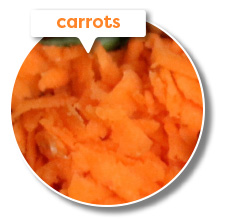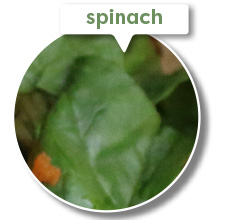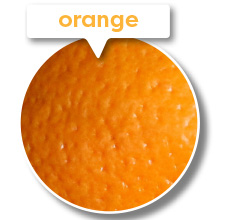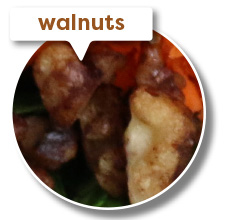Tired and craving junk food? How sleep affects your metabolism
Reading Time: 5 minutes Feeling hangry? Learn how a lack of sleep can affect your metabolism and your brain.
Reading Time: 5 minutes Feeling hangry? Learn how a lack of sleep can affect your metabolism and your brain.
Rate this article and enter to win
Happiness is…a salad? Before you count us out as weirdos with a concerning affection for kale, let us explain. What we eat can affect our moods for up to two days afterward, research shows.
Undergraduates who ate foods high in calories, saturated fat, and sodium reported feeling moody and blah in the aftermath, said Dr. Helen Hendy, a psychologist at Pennsylvania State University, in the journal Appetite (2012).
But students who ate fruits and vegetables felt happier until the following day, even after other influences had been ruled out, according to “Many Apples a Day Keep the Blues Away” (2013), a British study.
So go ahead and get your greens on with our Ultimate Easy Happy Salad. We’ll tell you what to do and why it works, and you’ll be a believer in no time.
Click each to learn more:

$1.50 per 16 oz. pack
Vitamin E stimulates dopamine, a neurotransmitter associated with feelings of reward and pleasure. Pairing complex carbs (e.g., veggies) with a healthy source of protein and fat (e.g., hummus) allows the natural sugars to release slowly, enabling blood sugar levels to remain stable and keeping you satisfied longer.
Vitamin A is here too, and is good for our skin.
Dip in hummus or ranch dressing; add shredded carrots to stir-fries or salads.

$2.50 per 8 oz. pack
Vitamins B6, B9, and C, and omega-3s help synthesize mood-boosting brain chemicals, such as serotonin and dopamine.
Antioxidants help us resist disease.
Sauté, add to smoothies, or use in our Ultimate Easy Happy Salad.

$1.25 for a navel orange
Vitamin C boosts energy levels by aiding iron absorption; Vitamin B6 and B9 (folate) appear to protect us from depression; thiamine is linked to improved mood.
Vitamin C protects the immune system (but won’t cure your cold).
Peel, chomp, wipe fingers.

$6.00 for a 6.5 oz. tub
Zinc and omega-3 fatty acids promote calm. Vitamin B9 (folate) appears to protect us from depression.
Omega-3 fatty acids help decrease inflammation and disease risk.
From the packet—or crack ’em open. One serving of nuts is approximately 1 oz. (a handful)—about 14 walnut halves.
Carol Landau, PhD, clinical professor of psychiatry and human behavior and medicine, Alpert Medical School, Brown University, Providence, Rhode Island.
Abou-Saleh, M. T., & Coppen, A. (2006). Folic acid and the treatment of depression. Journal of Psychosomatic Research, 61(3), 285–287. doi:10.1016/j.jpsychores.2006.07.00
Coppen, A., & Bolander-Gouaille, C. (2005). Treatment of depression: Time to consider folic acid and Vitamin B12. Journal of Psychopharmacology, 19(1), 59–65.
Hakkarainen, R., Partonen, T., Haukka, J., Virtamo, J., et al. (2004). Is low dietary intake of omega-3 fatty acids associated with depression? American Journal of Psychiatry, 161(3), 567–569. Retrieved https://www.ncbi.nlm.nih.gov/pubmed/14992986
Hendy, H.M. (2012). Which comes first in food—mood relationships, foods or moods? Appetite, 58(2), 771–775. doi:10.1016/j.appet.2011.11.014
Hopf, S.M. (2011). You are what you eat: How food affects your mood. [Blog post.] Dartmouth Undergraduate Journal of Science. Retrieved from https://dujs.dartmouth.edu/fall-2010/you-are-what-you-eat-how-food-affects-your-mood#.UzluXleqSFh
Hvas, A. M., Juul, S., Bech, P., & Nexo, E. (2004). Vitamin B6 level is associated with symptoms of depression. Psychotherapy and Psychosomatics, 73(6), 340–343.
Kimiecik, J. (2011). Exploring the promise of eudaimonic well-being within the practice of health promotion: The “how” is as important as the “what.” Journal of Happiness Studies, 12(5), 769–792. doi:DOI 10.1007/s10902-010-9226-6
Peet, M., & Stokes, C. (2005). Omega-3 fatty acids in the treatment of psychiatric disorders. Drugs, 65(8), 1051–1059.
Prices from Peapod/Stop&Shop. Retrieved August 2016 from: www.peapod.com.
Sawada, T., & Yokoi, K. (2010). Effect of zinc supplementation on mood states in young women: A pilot study. European Journal of Clinical Nutrition, 64; 331–333. doi:10.1038/ejcn.2009.158
Swardfager, W., Herrmann, N., & McIntyre, R. S. (2013). Potential roles of zinc in the pathophysiology and treatment of major depressive disorder. Neuroscience and Biobehavioral Review, 37(5), 911–929.
White, B., Horwath, C., & Conner, T. S. (2013). Many apples a day keep the blues away—daily experiences of negative and positive affect and food consumption in young adults. British Journal of Health Psychology, 18(4), 782–798.
Wyatt, K. M., Dimmock, P. W., & Jones, P. W. (1999). Efficacy of vitamin B-6 in the treatment of PMS. British Journal of Medicine, 318(7195), 1375–1381.
Rate this article and enter to win
Your go-to lunch spots likely include the campus dining hall, a local café, and maybe a fast-food restaurant. How can you eat conveniently without packing on the pounds, feeling like a slug, forgetting what food actually is, and setting yourself up for health problems?
That’s one of the most common questions students ask us at Student Health 101. We asked three stoic undergrads to subject their favorite meals to the scrutiny of a dietitian. Here’s what happened.
EXPERT: Alan E. Shugarman, registered dietitian, Miami, Florida
Wyatt S., recent graduate of College of Wooster, Wooster, Ohio
Wyatt’s meal
“I made it by layering french fries and bacon from the grill station and onions, green onions, cheese, and sour cream from the salad bar. This is good as a snack or side dish, and the ingredients are always available at the dining hall.”
Nutritionist’s verdict
“This meal is high in saturated fat and carbs. You’re getting a lot of the bad stuff, and not a ton of the good stuff, like fiber or vitamins and minerals.”
How this dish can be nutritionally redeemed
“Replace the deep-fried fries with air-baked fries or brown rice, and take some Greek yogurt in the place of sour cream. Better yet, choose steamed broccoli to replace those greasy french fries.”
Wyatt’s takeaway
“Almost every ingredient here has a healthier alternative, and the expert did a good job trying to transform the dish into something nutritionally sane. However, I believe that it would be too much work to reform chili cheese fries into a smart snacking option. For people interested in eating healthier, I would recommend eating something else.”
CLICK HERE for campus menu
Doug H., third-year student at The Ohio State University, Columbus
Doug’s meal
“It was one of the best chicken sandwiches I had ever had. Crispy on the outside, juicy on the inside, full of flavor. The Value Chicken Sandwich, perhaps á la carte, likely has become my new regular lunch choice.”
Nutritionist’s verdict
“As a regular lunch choice, fried onion rings, fried chicken breast, and bread is not the best option. This meal has more than half of your recommended daily fat, sodium, and carbohydrate intake. It’s a recipe for obesity, diabetes, and cardiovascular disease all in one meal.”
How this meal can be nutritionally redeemed
“Swap out the fried chicken with a grilled lean chicken breast on whole wheat bread. Instead of fried onion rings, opt for some fresh fruit or vegetables.”
Doug’s takeaway
“I’m not surprised. The meal was mainly boiled in grease. At this time, I can’t see myself eliminating fast food from my diet completely, due to personal preferences and convenience. I will continue to order these types of meals, but maybe less frequently. The advice is sound and feasible, though it may be difficult to adjust.”
Hannah T., fourth-year student at the University of Green Bay, Wisconsin
Hannah’s meal
“I enjoy this meal typically early in the day, because it isn’t too expensive, it’s easy to carry to class, and it gives me a quick boost of energy.”
Nutritionist’s verdict
“This is a high-fat, high-sugar, and high-caffeine snack that will result in fat deposition and an energy crash.”
How this meal can be nutritionally redeemed
“Go for a non-fat, Stevia-sweetened, vanilla almond milk latte. Skip the muffin altogether. If you must grab and go, choose an apple or banana.”
Hannah’s takeaway
“Next time I’ll make an effort to choose a food option that offers more nutritional support than just sugar and carbs. I would never have thought about substituting almond milk for regular milk, but it’s a great idea. Next time I will make sure to be more intentional about what I order.”
CLICK HERE for café menu
Nutrition and weight management for young adults: National Institute of Health
Basics about nutrition and food groups: Centers for Disease Control and Prevention (CDC)
College students’ guide to healthy eating: United States Department of Agriculture (USDA)
How to read & interpret nutrition labels: Food & Drug Administration (FDA)
Rate this article and enter to win
Has your dark mood ever driven you to a frenzy of ice-cream madness? Could you use a natural antidepressant without any side effects?
What we eat can affect our moods for up to two days afterward, research shows. Foods packed with vitamins, minerals, and omega-3 fatty acids—fruits, vegetables, whole grains, fish, and so on—can alleviate anxiety and lift our spirits. That’s not just because we’re feeling smug about eating something that’s good for us. The mood boost appears to come from the properties of the foods themselves. And unhealthy foods high in fat, sugar, calories, or sodium—like cheap hamburgers, candy, and chips—seem to make us miserable.
“On the biological front, food is used to alleviate hunger, so it is a basic need and leads to a physiological reward and positive feelings,” says Dr. Carol Landau, clinical professor of psychiatry and human behavior and medicine at Alpert Medical School, Brown University, in Providence, Rhode Island. “The situation becomes more complicated when food additives and fat, sugar, and salt are added.”
Undergraduates who ate foods high in calories, saturated fat, and sodium reported feeling moody and blah for up to two days afterward, reported Dr. Helen Hendy, a psychologist at Pennsylvania State University, in the journal Appetite (2012).
But students who ate fruits and vegetables felt happier until the following day, even after other influences had been ruled out, according to Many apples a day keep the blues away (2013), a British study. Meaningful improvements in mood were associated with seven to eight servings of fruits and vegetables a day. (In 2007, the CDC moved away from its five-a-day message, in favor of “Fruits and veggies—more matters.”)
As students, our time and money are limited. But we don’t have to settle for processed foods that leave us feeling crummy and tired. Try these mood-boosting, inexpensive snacks. For full-on happy feels, combine them into our Ultimate Easy Happy Salad:
Ultimate easy happy saladCost $1.00 for a navel orange
Why oranges work Vitamin C boosts energy levels by aiding iron absorption; Vitamin B6 and B9 (folate) appear to protect us from depression; thiamine is linked to improved mood
Happy bonus Vitamin C protects the immune system (but won’t cure your cold)
How to eat Unpeel, chomp, wipe fingers
Cost $5.49 for 6.5 oz. tub
Why walnuts work Zinc and omega-3 fatty acids promote calm. Vitamin B9 (folate) appears to protect us from depression
Happy bonus Omega-3 fatty acids help decrease inflammation and disease risk
How to eat From the packet—or crack ’em open
Cost $1.00 per 16 oz. pack
Why carrots work Vitamin E stimulates dopamine, a neurotransmitter associated with feelings of reward and pleasure
Happy bonus Vitamin A is good for our skin
How to eat Dip in hummus or ranch dressing
Cost $2.49 per 8 oz. pack
Why spinach works Vitamins B6, B9, and C, and omega-3s help synthesize mood-boosting brain chemicals like serotonin and dopamine
Happy bonus Antioxidants help us resist disease
How to eat Sauté or use in our Ultimate Easy Happy Salad